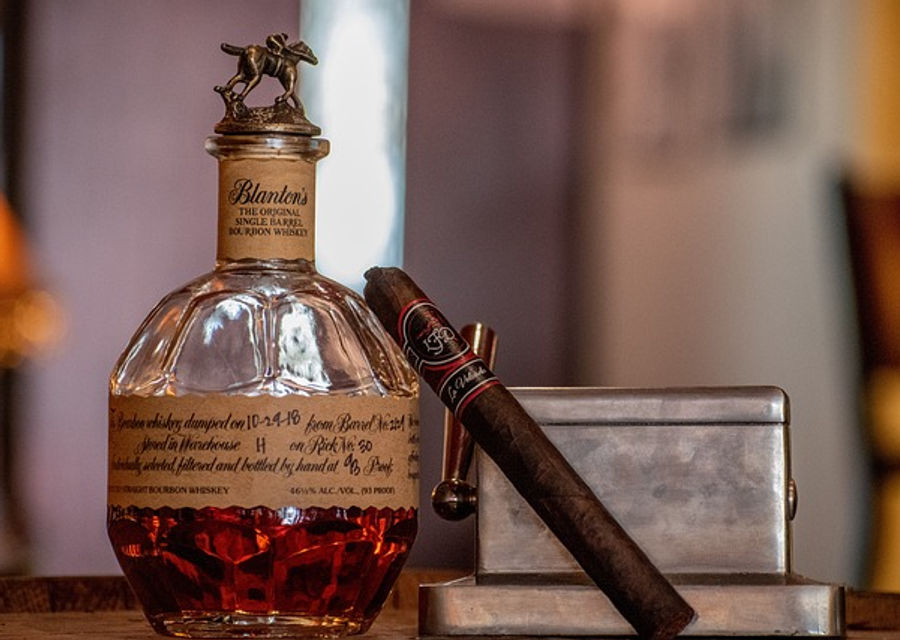The Shifting Landscape of the Kentucky Bourbon Market
- THE MAG POST

- Aug 10
- 5 min read

Kentucky bourbon has long been cherished as a distinctive American spirit, but recent market changes are raising eyebrows. As consumer preferences shift and economic factors weigh in, the fate of Kentucky bourbon hangs in the balance. This exploration delves into the rise, challenges, and future outlook for this iconic whiskey, while addressing how external pressures and evolving tastes have reshaped its trajectory. With its storied history, the enduring allure of Kentucky bourbon faces both great opportunities and significant hurdles.
The Kentucky bourbon market has undergone a significant transformation, particularly in the wake of economic shifts following the Pandemic. The distinct charm of Kentucky bourbon, which has roots tracing back to the 18th century, captured American hearts, especially after it was designated a "distinctive product of the United States" by Congress in 1964. However, changing drinking preferences have posed challenges to its long-standing popularity. As trends ebb and flow, the rising specter of economic recessions may heavily influence Kentucky bourbon's future market viability.
Understanding the Rise of Kentucky Bourbon
Typically known for its rich corn base and charred oak aging, Kentucky bourbon saw a tremendous revival as drinkers began rediscovering classic spirits post-Great Recession. This resurgence allowed bourbon bars to flourish, where the cost-effectiveness and versatility of bourbon became attractive for mixologists eager to explore this golden elixir. Drinks made with bourbon, easily adaptable for various cocktails, drove sales, positioning the spirit back into the limelight.
In addition, legislative support played a pivotal role in betting on bourbon's resurgence. A law passed in 2013 enabled the trade of vintage bourbon bottles and fueled a collector's market that added to its desired status. Nostalgic elements in popular culture, like the TV show 'Mad Men', further contributed to the bourbon renaissance. Such factors converged to elevate bourbon into a premium commodity, attracting not just casual drinkers but also investors seeking to buy bottles as assets that would potentially appreciate over time.
By the end of the decade and into 2020, bourbon sales escalated by an impressive 7% globally, outpacing sales growth observed earlier in the decade. The bourbon connoisseurship blossomed, transforming ordinary distillers into celebrated figures whose craftsmanship was increasingly recognized. This elevation in status meant people actively sought to own fine bourbons, often at prices that doubled or tripled initial retail values on the secondary market.
While the bourbon market seemed poised for a golden age, it became susceptible to external economic pressures. The intertwining effects of inflation and changing consumer preferences among newer generations, particularly Gen-Z, indicated a turn in buying habits, which had begun to impact sales negatively. Rising costs led many prospective bourbon drinkers to explore cheaper alternatives, further complicating an already shifting marketplace for this iconic spirit.
Interestingly, while bourbon had garnered commodity-like attention, driving up demand, it also faced the risk of oversupply due to long aging processes that characteristically define bourbon production. Now, distillers face an influx of available whiskey that overstretched their capacity to sell, resulting in price depreciation and burgeoning competition to capture consumer interest amidst economic adversities.
Factors Impacting the Kentucky Bourbon Market
Recently, escalating tariffs imposed by the Trump administration created a ripple effect in the bourbon market, imposing additional costs that impacted exporters. The European Union responded with its own tariffs on American goods, encompassing Kentucky bourbon, adding to the mounting pressures on this once-flourishing market. The unanticipated solidarity among other nations and the retaliatory measures likely affected the export routes essential for sustaining sales volumes vital for Kentucky bourbon distillers.
Contrary to expectations that tariff initiatives would protect American businesses, stories from industry veterans highlighted that such tariffs served to impact local liquor sales drastically. For instance, a famed distillery reported a sharp drop in sales directly attributed to Canadian provinces halting imports of American beverages. This market shift has drawn attention to the precariousness of businesses that rely heavily on cross-border trade, raising concerns about future profitability.
The ongoing tensions not only diminished sales overall but compelled companies to rethink their strategies. Establishing local attributes without compromising quality became crucial. Distillers in regions outside Kentucky, especially in Canada, started experimenting with bourbons or whiskey imitations, piquing consumer interest previously focused solely on authentic Kentucky products. Innovations in local distilling techniques emphasized the ongoing evolution of spirits amid political complexities.
With sales figures indicating a declining trend, additional big players in the bourbon industry started reporting troubling financial indicators, driving speculation on possible bankruptcies or consolidation within the industry. Reports emerged of famous bourbon brands facing inventory issues with the market’s swift slowdown startling many industry professionals. The nexus of economic pressures, evolving consumer behaviors, and policy shifts wrapped the bourbon industry in layers of uncertainty.
As time strides onward, the aftermath of these conditions uncovers a necessity for pivoting strategies to embrace innovation and adaptability within the bourbon industry. Lessons from the Scotch whiskey industry highlighted the potential for long-term trade resilience. Reconfiguring business models and exploring niche markets at home and abroad could hold the key to reestablishing Kentucky bourbon as a responsible player in the global spirits arena in the coming years.
Future Outlook for Kentucky Bourbon
The future of Kentucky bourbon remains intricately tied to how distillers pivot toward achieving market relevance. While external challenges impose their influence, a history of resilience within the spirits sector offers optimistic clues about reinvention. The famed success story of Scotch whiskey can provide insights and spur innovative practices tailored to Kentucky bourbon producers as they redefine their market approach in a challenging terrain.
It is essential to consider that distillers can bring creativity into the business, blending tradition with contemporary business insights to cultivate a generation likely to appreciate Kentucky bourbon’s unique aromas and flavors. Crafting memorable tasting experiences while educating consumers about the cultural significance of bourbon could rejuvenate enthusiasm for this quintessentially American spirit.
Additionally, embracing local agricultural advantages can also emerge as a pivotal factor in consolidating market loyalty. By illustrating natural, high-quality ingredients contributed to their iconic recipes, bourbon producers can curate authentic experiences that captivate an audience eager for transparency and sustainability. Fortifying local partnerships simply notches up the appeal of the Kentucky bourbon experience.
Consumers worldwide remain open to authentic narratives that underscore the genuine craft behind beloved spirits. Compelling storytelling about each bourbon’s origins, processes, and innovations—whether they are based on corn, yeast, or quality water—could reconnect consumers stuck in their perceptions of bourbon as dated or expensive products. Presenting bourbon as a unique, valuable experience rather than a standard commodity can influence purchasing decisions among fickle drinkers.
In conclusion, while economic pressures unveil obstacles for the Kentucky bourbon market, adaptive strategies based on historical insights and consumer behaviors can solidify its future standing. With ongoing innovation, commitment to quality, and capturing audiences through compelling storytelling, Kentucky bourbon can reclaim its space as a beloved choice in the spirits industry.
From our network :






















































Comments